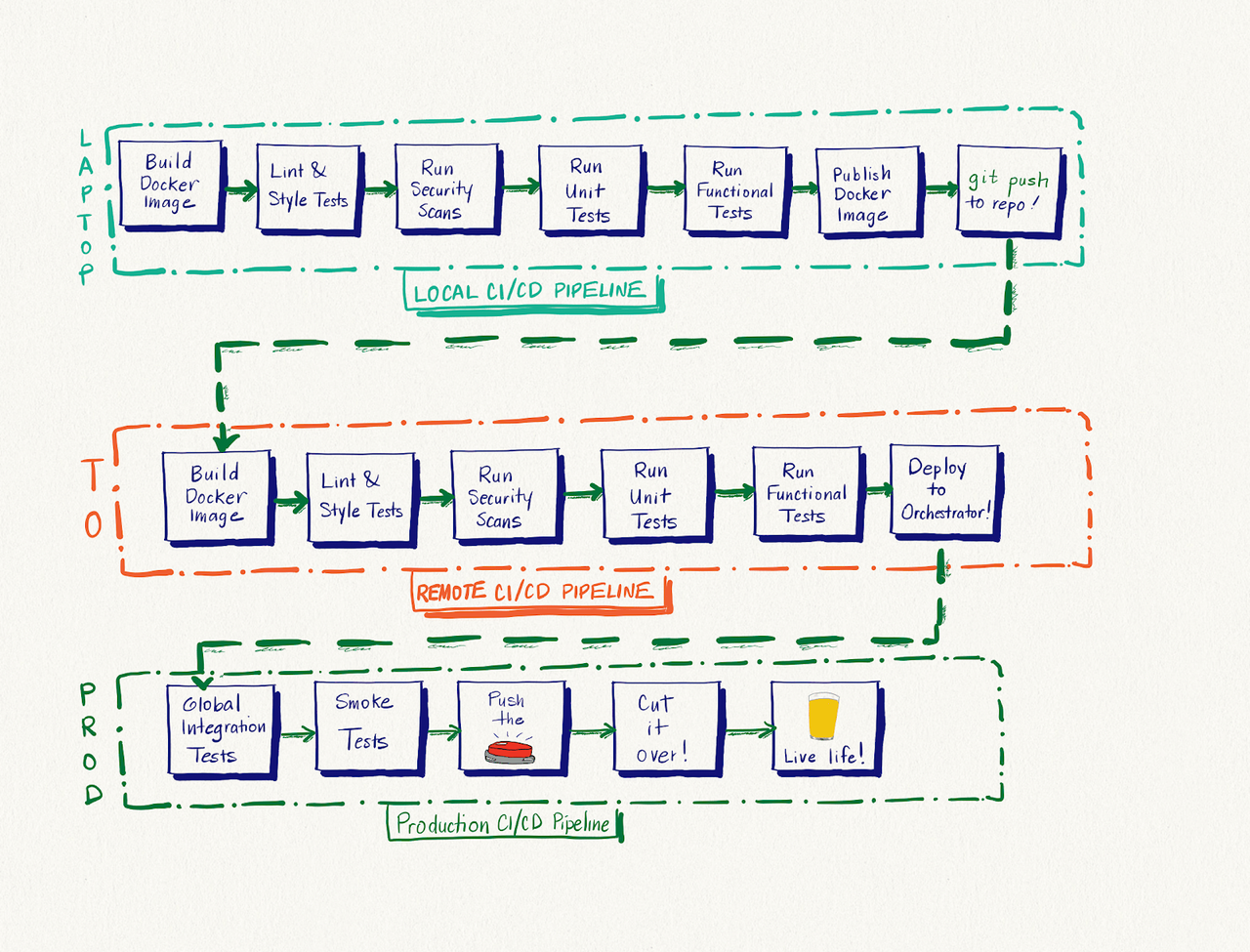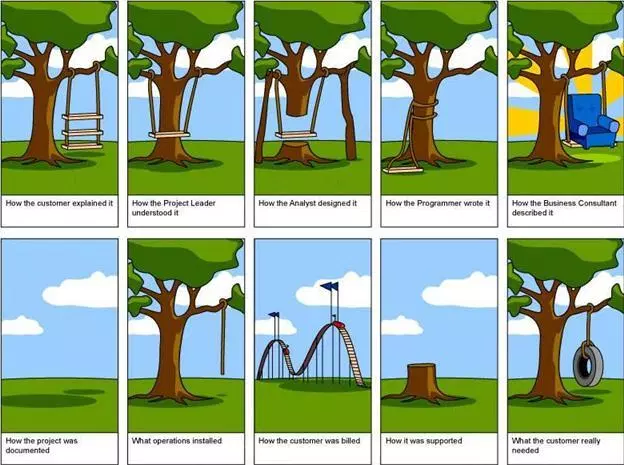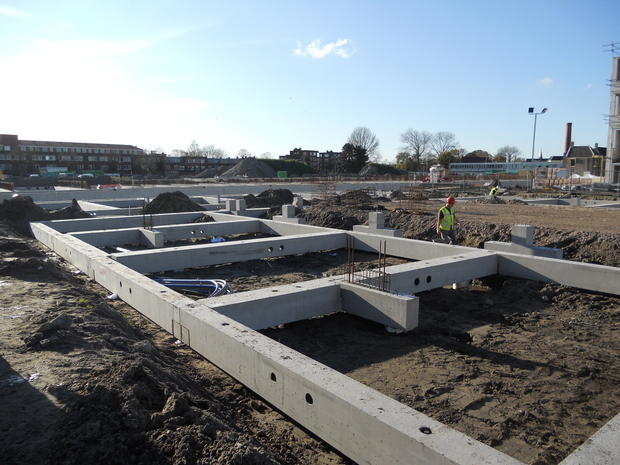How to Make Enterprise Container Strategies That Last (Part One)
I was in high school when I got introduced to this weird app called VMware Workstation. I thought the idea of using your Windows machine to run other machines was really compelling - a perfect fit of my younger and geekier self. You couldn’t pay me enough back then to believe that almost all of the world’s most important applications would eventually run on virtual machines...on someone else’s computers! I really liked the idea, but Workstation was a bit of a bear to use at the time and the virtual machines it created were quite slow.
Fortunately, many realized that making those machines faster and easier to create would revolutionize the way IT was done while making IT way cheaper. It didn’t take long before paravirtualization, processor-native extensions, VM orchestration, software-defined networking and API-driven compute made running virtual machines at enterprise scale a reality. Thanks to these and other innovations, teams small and large can now create and deploy global-scale applications within minutes with very little effort.
Given all of this and the experience I’ve gained over the years, I’m thoroughly enjoying today’s revolution in modern computing that makes deploying big apps even easier - the container.
This two-part series will talk about the increasing popularity of the enterprise container strategy, This post will focus on some anti-patterns that I’ve seen in building these strategies and ways of avoiding them. My next post will focus on picking the right tools for the job.
If You’re Moving to Containers, Then You Are Doing the Right Thing
Virtual machines used a thin bridge between real hardware and a host operating system called a virtual machine monitor, or hypervisor, to emulate everything it takes to run a real computer inside of your computer. Similarly, containers use kernel namespaces to emulate the operating system within a single process. To the host, a container is “just” like any other app like Chrome or Outlook and gets managed like such.
There are several container runtimes available today that enable these things, but since your mind already probably thought “Are you talking about that Docker thing,” we’ll stick to Docker here.
There are four big advantages that make containers different enough to drive 32% of companies to spend over $500,000 annually on licenses for container management solutions in 2017 alone:
- Unlike VMs that still need operating system ISOs and complicated configuration management, provisioning an application onto a container is as simple as writing a container manifest describing what the application needs and building a container image from it.
- VMs require a lot of boilerplate, require lots of space and can take a while to start. Since containers just emulate the operating system and their apps, they only occupy a few megabytes and can start in seconds.
- VMs aren’t very portable. They are quite large and carry a lot of metadata with them. Container images can live in public or private repositories, and the containers they create can run on almost anything, even Raspberry Pi’s, and will look and behave the same, no matter where they run.
- VM clusters are expensive and require a lot of infrastructure to get going. Container orchestration systems can run on anything, from laptops to large data centers.
What do these advantages enable? Lots!
- Completely-local development environments that nearly mimic production.
- Truly granular and independent processes instead of huge monolithic applications.
- Smaller, faster and tighter releases that are fast and easy to rollback and recover from.
- The ability to focus on things that makes your business money and less on things that don’t.
Moving a monolithic Java app on WebLogic into Docker is relatively easy. Unfortunately, my experience consulting large and heavily-regulated industries on this matter has shown me that the real challenges in creating large-scale container platforms aren’t technical.
Laptop to Production is Key
If developers cannot run the same version of an application that will run in production, then your enterprise container strategy will fail.
This might be a shocking statement to some. Let me explain.
The biggest benefit of running applications inside of containers is their portability. A Linux container doesn’t care that it’s running on a memory-constrained VirtualBox VM inside of a MacBook or a cc2.8xlarge AWS instance; as long as that machine is running Linux and Docker, that container will run.
How Fast and Safe Releases Happen
Ideally, with container-driven development, whenever a developer writes a bugfix or new feature code, assuming that they have their pipelines written in code, she should be able to use it to run unit, security and style tests, package the new version of their app into a container image after they pass, create a Docker container from that image, run integration tests against that container and, most importantly, know with nearly complete confidence, that any containers created from that image will work in production, all from their laptop or workstation. The workflow below illustrates this process:
When done correctly, assuming safe deployment procedures, this enables development teams to release new code into production several times per day, safely, with the ability to roll back if needed.
Most software deployment lifecycles that I’ve seen in the enterprise have a lot of steps that separate local builds from what actually runs in production. What I’ve seen usually looks something like this:
- Developers (optionally) run unit tests and style checks on their laptop or workstations. Since the tests are written by them alone, the quality and coverage of those tests are directly proportional to that team’s ability (and time) to write good tests.
- Upon checking in the code, a pipeline somewhere runs additional tests that the developer did not run earlier. This code gets built in a heavily-modified dev environment that’s often held up by prayers and duct tape. They may or may not be notified if these tests break the build.
- Once that pipeline passes, QA runs even more tests that the developers don’t know about. The QA environment is less heavily-modified but still needs some sort of divine intervention to keep it up and running. Since these tests are queued, QA is always under pressure to get these tests done. Furthermore, since QA and development are usually siloed, the quality of those tests is highly variable.
- Once QA certifies this code as good, the Performance team runs stress tests (in a separate environment) that development teams, again, don’t know about. (Are you seeing a pattern?) Since they are also on a queue, they are also whipped into getting stuff done quickly, further compromising quality.
- Once the Performance test marks this code as good, then one or more Change Management meeting happens to gather approvals and corral teams into a good time (usually during the weekend) when everyone involved can do a production release.
- Release day happens. After a few final UAT and smoke tests in a pre-production environment, the release crew pushes the new build into Production. However, since the build that the developer made in step 1 is wholly and unpredictably different from the build that is being released in step 6, there’s no telling whether the build will actually work there. Sometimes, issues are discovered on release day and can be rolled back. Most times, however, customers are the ones that find these issues. When this happens, people get yelled at, more weekends get disrupted, companies lose good employees and quality ultimately suffers until something big happens.
Some enterprises have more testing in this workflow. Others have the less. The problems with all of this are usually the same however: highly-disparate environments, extreme variations in testing quality, tons of silos and, ultimately, glacially slow and highly-tense release cycles that prevent enterprises from reaching more customers and making more money.
Fix The Process First; Awesome Technology Will Follow
Often CIOs and CTOs think that moving to containers is the silver bullet that fixes all of this, and understandably so. “They’re smaller VMs that run anywhere and start up in five seconds? Let’s move everything!” is often the rallying cry that begets multi-million dollar enterprise container strategies and global-scale OpenShift and ECS deployments. It’s an understandable response - the cost-savings and simplification of operations seem evident.
While the latter is a lot of fun (especially for nerds like me), most companies start here and never question the processes that drive their slow release processes in the first place. The result? Infrastructures explode in complexity, releases get even slower and more process-driven, companies still lose good employees, quality doesn’t change and startups (or the Facebook/Amazon/Netflix/Google cabal) eat your lunch.
The only way to solve this is to remove the barriers between production and the developer’s laptop. As you can see from the aforementioned workflow, doing all of this is quite involved.
Let’s take our QA testing environment for example. An increasing number of QA departments are using browser automation tools like Selenium and Cucumber with WebDrivers to verify that UIs are behaving properly. However, many QA departments still use a bevy of manual runbooks to drive important chunks of this testing, further slowing down releases and increasing pressure on QA engineers. If all of those runbooks were done during the pipeline, and if that pipeline were written as code, then developers can spend less time waiting on QA by running QA tests during the local development process, and QA can spend more of their time helping developers write better tests. Win-win!
The Path to Containers at Scale is a Lot Like Building a Home
Have you ever driven by a street and seen a big hole in the ground that’s obviously for a house or building for months? “When are they going to actually start working on that house,” you’ve thought.
If you had a custom house built or have friends in the construction business, you know where I’m going with this. Getting the foundation for the house right is the difference between a house that stands for 100 years and a house that becomes a maintenance nightmare at year five. Part of getting those fundamentals right involves doing each step carefully, one at a time.
Most of the enterprises I’ve helped build enterprise container strategies for wanted to start with moving all of their key applications onto their orchestrator of choice within a relatively short period of time, largely for the reasons I’ve mentioned in the previous section. Many consider moving the monolith into the container the finish line, but doing this is often just table stakes. Without considering the “people and process” challenges mentioned in the previous section, there are several engineering concerns that come after moving the monolith to the container:
- Containers are meant to be short-lived. Can the monolithic application handle running multiple instances of itself?
- Does the application rely on the network and host its running on being perfect? Can it handle network routes getting disconnected or being killed due to being on an overloaded host?
- Does the application rely on underlying storage to hold state? What happens if that storage becomes unavailable?
- Does the application server the application runs on assume that its running multiple applications as well? Does the application server make assumptions about networking and underlying host resources?
- Does the licensing model for that application server support running potentially hundreds of instances of itself without costing an arm and a leg?
Some of the answers to these questions are pretty easy to uncover during the proof-of-concept stage. Others, such as underlying licensing or replication concerns, can only really be answered after the “go-live.” The issue with “lifting-and-shifting” a bunch of applications in one go is that engineering teams will be burdened with tons of go-live surprises, potentially all at once, while also learning how to do things in a post-container world.
To stick to the construction analogy: lifting-and-shifting an entire enterprise at once is like building a house in one shot while making educated guesses on when and how the structure will collapse.
Choosing a single application as the candidate for building an enterprise-scale containerized platform is key to driving a winning enterprise container strategy. Focusing on building a containerized platform for that single application gives every team involved the opportunity to learn how to operate a containerized platform and a smaller and more controllable space for uncovering these surprises both before and after onboarding customers. As well, focusing on single applications at a time builds institutional knowledge that greatly helps in simplifying future migrations onto containerized workloads and decreasing operational risk.
“You’re telling me to move one app at a time? That will take forever,” you’re probably thinking. It’s easy to think this way since one anything at a time feels like a slog. However, much like our empty lot, the cool thing about this approach is that moving and learning this way creates a snowball effect whereby onboarding new apps (and their customers) into the platform becomes easier and easier without increasing operational overhead. The crude chart below demonstrates this.
It pays to go slow sometimes.
Conclusion
Many enterprises are making the right choice in leveraging containerized platforms for their digital transformations. However, choosing to “boil the ocean” by moving entire suites of applications at once is planning to fail. The journey to containers at enterprise scale is much like building a house, and like a house, the journey is best done one brick at a time. By starting this journey with moving as much of the SDLC process back to the developer as possible, and by focusing on transforming a single application and gaining institutional knowledge slowly, enterprises stand a better chance at creating a modern architecture that lasts.
Part Two of this series coming out soon!
Passionate about DevOps, security, automation and cloud? We’re hiring! Check out our current vacancies across the UK, US & Australia >
Sources
1. Network World. Cisco says almost all workloads will be cloud based within 3 years. 2018 February 05. https://www.networkworld.com/a...
2. Namespaces have been a feature of the Linux kernel for some time. You can read more about them here: https://www.wikiwand.com/en/Linux_namespaces.
3. Ian Lewis. Container Runtimes Part 1: An Introduction To Container Runtimes. 2017 December https://www.ianlewis.org/en/container-runtimes-part-1-introduction-container-r
4. Portworx. Container Adoption By The Numbers. 2017 December 18 https://portworx.com/2017-container-adoption-survey
5. Interested in learning more about pipelines as code? Read on: https://blog.rackspace.com/cicd-pipelines-as-code











